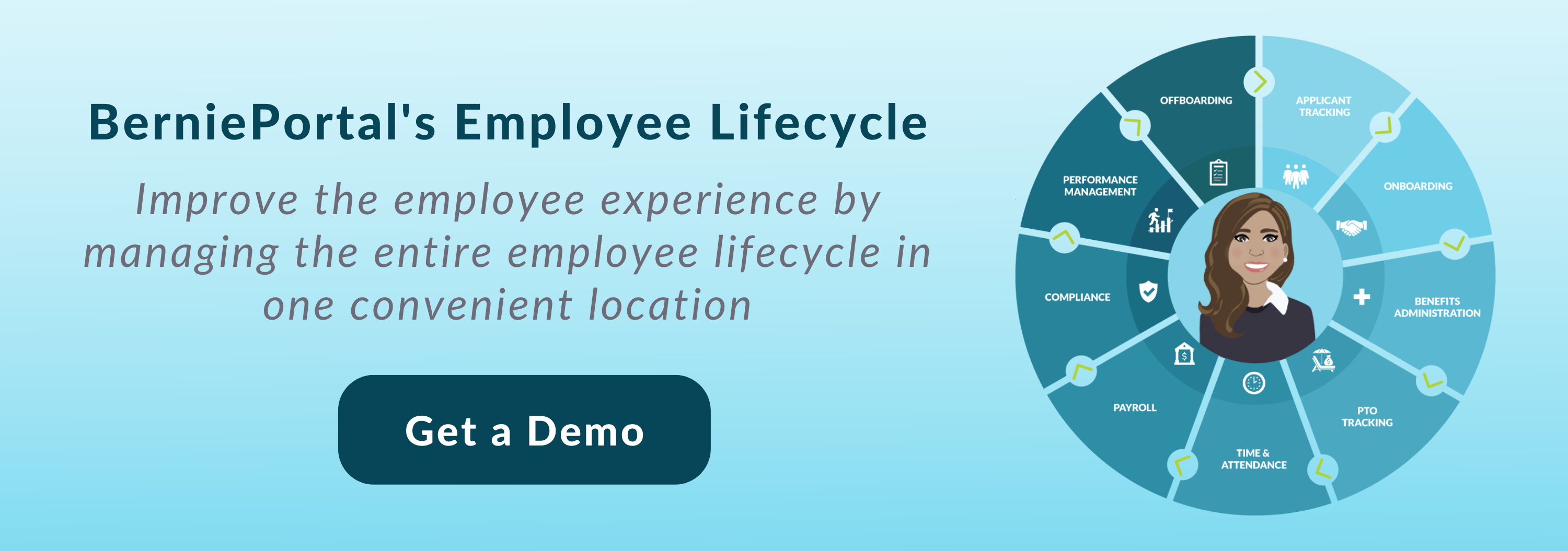
Written by
Katie Shpak
Katie is the leader of the marketing team at BerniePortal. She oversees all content creation.
Guide to Providing Healthcare Benefits to Employees

Starting a health insurance plan can certainly induce some headaches without the proper steps in place. If you’re an HR professional tasked with the responsibility of creating a plan for your organization, you may be wondering where to begin.
A good start is to choose a benefits broker. But—this can be challenging. You need to make sure the broker is the right fit for your organization.
How to Choose a Benefits Broker
Choosing a broker can seem stressful. You want to choose a broker that can offer satisfactory options to your employees while staying within your budget.
Well—there are brokers out there who can do both. Brokers who care about your business and your employees.
Here are some tips to ensure you’re choosing the right broker:
-
Consider ALL options. There are a ton of brokerages out there. Get on the phone and have conversations. Find out which brokerage is the best one for your organization and your employees, but make sure you’re talking to brokers that work with organizations your size and in your state. Ultimately, you want to find the one who is willing to go above and beyond to keep your costs low without sacrificing benefits.
-
Ask questions. A good broker will be able to field all of your questions about alternate financing, plan administration, and compliance. Here’s a link to some questions you should ask your broker.
-
Talk to others. Ask the following questions:
What are other businesses using?
Are they satisfied?
Are they keeping the cost of their health plan down?
Are their employees utilizing the health plans or are they seeking alternative coverage?
4. Ask about the broker’s clientele. With whom does the broker work, and do they have long-term clients? Do they have testimonials or satisfied customers willing to provide reviews?
5. Don’t be afraid to make a change. You have to do what’s best for your business. Shopping around could save you a lot of money.
Factors to Consider When Selecting Benefit Offerings
Providing comprehensive employee benefits is a great tool for organizations looking to boost recruitment and retention rates. Additionally, it’s important to understand current benefit trends and get clarity around factors that may affect employees’ preferences and participation.
When choosing employee benefits offerings, take into consideration the following:
The generation that makes up the majority of your workforce. Different benefits can appeal to different generations. If your workforce consists of mostly millennials, it would be important to provide a benefits package that a millennial would find useful. For instance, childcare benefits could be very helpful and appealing. If your company consists of a high percentage of baby boomers, then including a robust retirement plan would be more appropriate. You shouldn’t limit the benefits to one generation or another, but you should be mindful of what constitutes the majority of your workforce.
Competitor offerings. Make sure you know what your competitors are offering. Conduct research on common benefit offerings within your given industry so that you can gain insight into what employees seem to prefer. Using this information, employers can offer benefits that employees desire and, as a result, increase employee recruitment and retention.
Do I Have to Offer the Same Benefits to Everyone?
Ultimately, it depends on the benefit and how many hours an employee works. For example, applicable large employers, or ALEs, are required by the Affordable Care Act (ACA) to offer health benefits to all employees who work at least 30 hours per week or 130 hours per month regardless of whether an employer classifies full-time and part-time differently.
Whether or not organizations offer benefits depends largely on what the benefits are, how many people work for the employer, and—in some cases—whether or not the employer is federally contracted. For the most part, organizations are not required to offer benefits like PTO at all to any employees—full-time or not.
Title VII of the Equal Employment Opportunity Commission (EEOC) mandates that an individual’s eligibility for benefits, the number of benefits received, or the premium charged to participate in employer-offered benefits cannot be determined on the basis of race, color, sex, national origin, age (ADEA), or religion.
Likewise, the Health Insurance Portability Accessibility Act (HIPAA) prohibits employers from offering group benefits that discriminate against individuals based on health factors such as:
- Health status
- Medical condition (including both physical and mental illnesses)
- Claims experience
- Receipt of health care
- Medical history
- Genetic information
- Evidence of insurability; or
- Disability
HIPAA also regulates discrimination in regards to Cafeteria plans (Section 125 plans), which provides employees an opportunity to set aside part of their compensation as pre-tax contributions toward health insurance and other benefits. Under HIPAA, group benefits cannot discriminate in favor of highly compensated employees in terms of eligibility, contributions, and/or benefits. Because this is a tax-related law, the Internal Revenue Service (IRS) enforces these regulations.
Some states may also have laws in place that limit the employer’s ability to segment employee benefits by group. For instance, some states have paid sick leave laws in place that require employers with 50 or more employees to offer paid leave to all employees. Find employee discrimination laws for your state to remain compliant.
So how can you segment employee benefits? Employers can legally offer different benefits to “similarly situated individuals” based on classes such as:
- Tenure
- Part-time or full-time status
- Exempt or non-exempt status
- Job group
- Department
- Union involvement
- Location
See here for more details on designing and offering employee benefits packages.
How to Communicate Benefits to Employees
Since employees often stress about benefits, it’s important to prepare them by establishing clear and accessible guidelines. Using an online HRIS, like BerniePortal, you can simplify the enrollment process and make it easy for employees to follow.
Within the benefits administration feature, you can host plan documents, including summary plan descriptions so that employees can review the information of each plan offering to make the most informed decision for themselves and their dependents. You can even add links to resources and videos to help educate employees on their benefits.
Additionally, to always provide constant communication, BerniePortal allows you to set reminders both within the portal and via email to remind employees of the open enrollment window. They can receive a notice when the window opens, as well as reminders throughout that window.
If employees have questions regarding any of their benefits or need assistance choosing a plan, make sure to direct them to your broker. You can include the broker’s contact information within the benefits administration feature as well.
You can also prepare your employees by sending out an email before open enrollment begins. We’ve even devised an email template that you can use to help guide your employees and facilitate a smooth open enrollment process.
Open enrollment doesn’t have to be stressful. With the right process in place and a great broker, your employees can have a smooth, seamless experience electing benefits each year.
Additional Resources
You can stay informed, educated, and up-to-date with important HR topics using BerniePortal’s comprehensive resources:
- BerniePortal Blog—a one-stop-shop for HR industry news
- HR Glossary—featuring the most common HR terms, acronyms, and compliance
- HR Guides—essential pillars, covering an extensive list of comprehensive HR topics
- BernieU—free online HR courses, approved for SHRM and HRCI recertification credit
- HR Party of One—our popular YouTube series and podcast, covering emerging HR trends and enduring HR topics

Written by
Katie Shpak
Katie is the leader of the marketing team at BerniePortal. She oversees all content creation.
Related Posts
FMLA, or the Family and Medical Leave Act, is a federal law that allows qualified...
FSAs and HSAs can get tricky within a family. While HR should never provide employees...
Yes, you can use a health savings account, or HSA, for cosmetic surgery, but only in...
If you work at an SMB without mental health support resources, you may feel limited in...









Submit a Comment